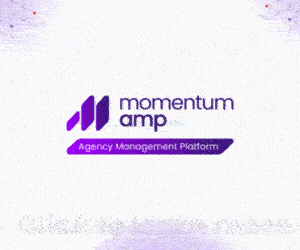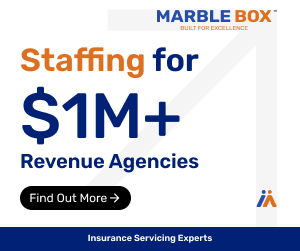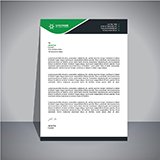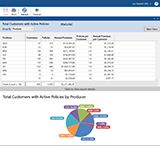
A recent report shows that independent insurance agency carriers have slowly chipped away at exclusive agent and direct writer carriers’ shares of the U.S. property-casualty market over the past five years.
The 2024 Market Share Report published by the Independent Insurance Agents & Brokers of America in late June showed that IA carriers’ penetration rate for all lines of P&C coverage was 62% in 2023. This was up from 58% in 2019. At the same time, exclusive agency carriers lost 2 points of market share and direct writers lost 1 point.

Independent agents write the overwhelming majority of commercial lines premium. Their penetration rate held steady at around 87% over the five-year period. However, their penetration of the personal lines market, a segment dominated by a few large exclusive and direct carriers, grew by 4 points during that time, while exclusive and direct carriers lost 2 points each.
The improved personal lines results may be due to several factors, including:
- More competitive pricing.
- Large exclusive and direct carriers reducing their underwriting appetites during the current hard market.
- Consumers wanting the expertise they can get from independent agents and that they cannot get from internet-based quoting systems.
The report provided many insights into the current P&C market.
U.S. P&C premiums are flirting with the $1 trillion mark. Premiums in 2023 totaled $953 billion, a gain of a quarter trillion dollars since 2019. Almost half of that was in the Homeowners and Private Passenger Auto lines combined. Premium for all lines grew at an average 8.0% over the period, but it jumped 10.6% in 2023, a reflection of the hard market.
IA’s grew their personal lines market share. Market penetration for IA carriers in Private Passenger Auto rose from 30.8% in 2019 to 32.8% in 2023. The increase was even more dramatic for Homeowners, rising from 44.2% to 50.3%. Ubiquitous advertising by the exclusive and direct carriers has not protected their market share.
At the same time, personal lines underwriting results deteriorated. The combined ratio for Homeowners was only 90% in 2019. In the following four years it ranged from 99% to 101%. Private Passenger Auto had an impressive 85% combined ratio in 2020, but that jumped to 95% in 2021, 106% in 2022, and 100% last year.
Many commercial lines have also had profitability issues, but there are bright spots. Liability insurance written on an occurrence basis, Products Liability, and Commercial Auto had one year each with a combined ratio below 100%. Conversely, Commercial Multi-Peril has been right around the breakeven point, Inland Marine had four years with combined ratios between 77% and 83%, and Workers’ Compensation has been a profit factory with combined ratios between 78% and 83%.
Overall commission rates have been stable. There have been anecdotal reports of some carriers reducing commission rates. However, the report shows little change in commission rates (commissions plus contingencies divided by premium) over the five-year period. Compared to the five-year averages, commission rates for Private Passenger Auto and Homeowners were down 0.1% last year. Average commission rates were slightly higher than the five-year average for Workers’ Compensation, sharply higher for Commercial Inland Marine, Occurrence-Based Liability, and Private Flood, 0.2% lower for Commercial Multi-Peril, and 0.5% lower for Commercial Auto, a line that has had persistent profitability problems.
The surplus lines market share is growing. Surplus lines results are further evidence of the tight P&C markets. In 2019, surplus lines carriers wrote 6.2% of P&C premium. By 2023, that figure had grown to 9.4%. Their premium volume more than doubled, from $43.6 billion in 2019 to $89.3 billion in 2023. Much of this business is produced at the retail level by independent agents. The report shows that independent agents have been growing their carriers’ market share, have received generally stable compensation, and are holding their own against carriers with seemingly unlimited advertising budgets. Insurance buyers know and trust independent agents and are rewarding them with their business.
















